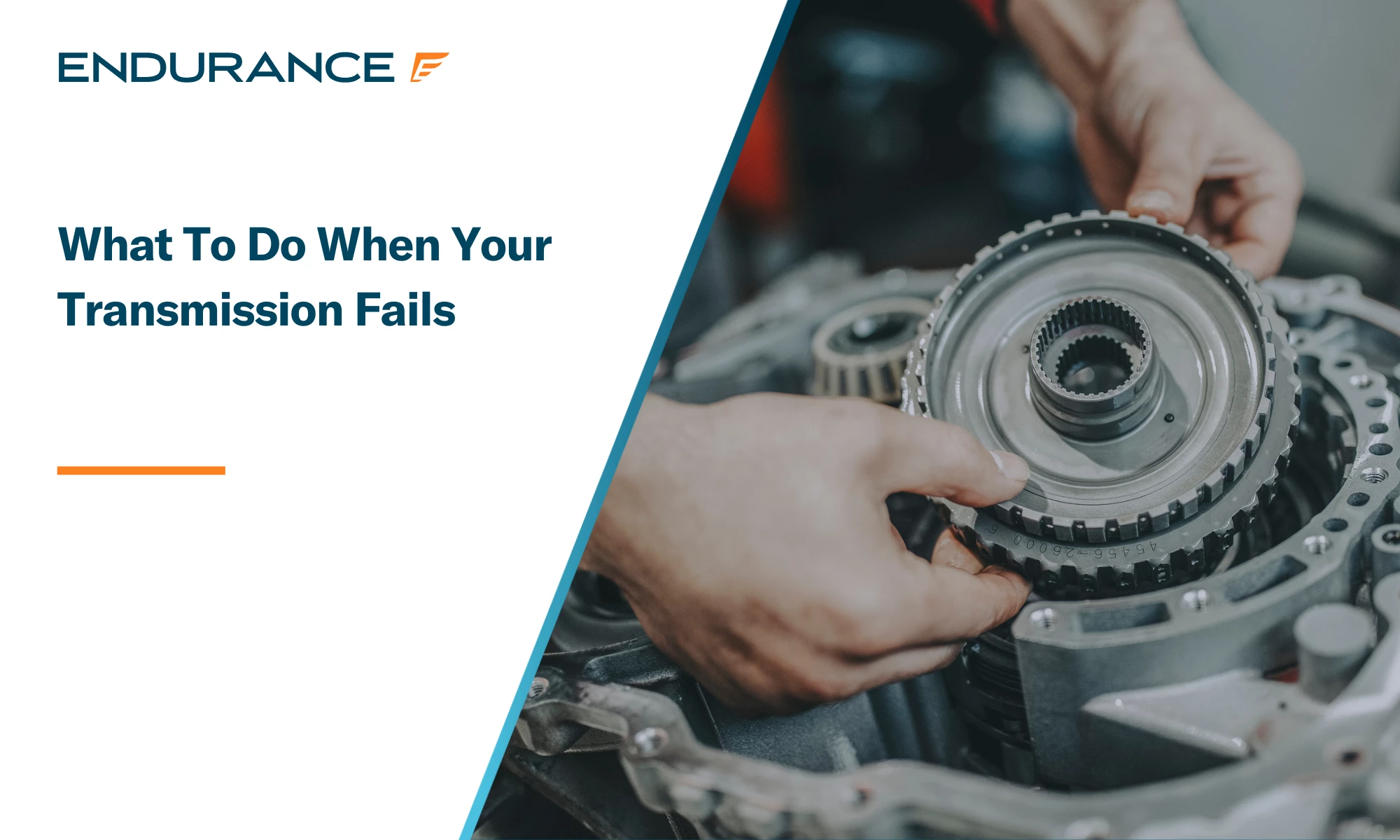¡Consigue esta oferta! Llama ahora.
Hable con un especialista en planes de protección de vehículos y obtenga $300 apagado cualquier nuevo contrato al instante.
Llamar 866-678-4172
o escanea el código a continuación


La falla de la transmisión es una de las reparaciones de vehículos más costosas y disruptivas, con costos promedio superiores a $4.700Las primeras señales, como el deslizamiento de las marchas, el retraso en los cambios o los ruidos de rechinamiento, pueden agravarse rápidamente si no se controlan. Actuar con rapidez puede ayudar a reducir los daños y los gastos de reparación, a la vez que... Las garantías extendidas, también conocidas como contratos de servicio del vehículo, ofrecen protección financiera Cuando sucede lo peor.
Aprenda a detectar los síntomas de una transmisión defectuosa, comprenda el desglose de costos de las reparaciones comunes y explore cómo los planes de protección automotriz pueden ayudarlo a evitar pagar miles de dólares de su bolsillo.
Aunque la transmisión de un auto puede pasar desapercibida hasta que algo falla, es un sistema vital en los vehículos con motor de combustión interna. Una transmisión convencional utiliza una combinación de engranajes, embragues y sistema hidráulico para transferir la potencia del motor a las ruedas motrices. Si hay algo bueno en un problema de transmisión, es que a menudo hay señales de advertencia antes de una falla total. Estar atento a estas señales de alerta y buscar ayuda profesional de inmediato puede minimizar los daños en la transmisión, haciendo que las reparaciones sean más rápidas y económicas. A continuación, le indicamos qué debe tener en cuenta:
| Señal de advertencia | Detalles |
| Engranajes deslizantes | Hay un cambio de marcha repentino o se siente como si la transmisión no estuviera transfiriendo completamente la potencia; esto puede deberse a un engranaje dañado, un embrague desgastado o poco líquido de transmisión. |
| El coche no se mueve en marcha | El motor responde al presionar el pedal del acelerador, pero el automóvil no se mueve cuando la transmisión está en marcha adelante o en reversa, un síntoma de poco líquido de transmisión o falla de un componente interno de la transmisión. |
| Cambios de marcha retrasados o bruscos | Los cambios de marcha lentos, bruscos o bruscos pueden ser signos de un solenoide desgastado, problemas de líquidos o daño interno. |
| Rechinamiento o vibración durante la aceleración | Las vibraciones o una sensación áspera durante la aceleración pueden indicar problemas en el convertidor de par o desgaste de la transmisión. |
| Ruido de quejido o zumbido al conducir | Un sonido agudo o estridente al acelerar puede indicar cojinetes desgastados o problemas en la bomba de transmisión. |
| Ruidos inusuales en punto muerto | Un sonido metálico o zumbido cuando el automóvil está en punto muerto puede indicar un deterioro del líquido de transmisión o desgaste de componentes internos. |
| Olor a quemado | Un olor penetrante y notable que proviene de debajo del automóvil (y posiblemente del compartimiento del motor) puede deberse a un líquido de transmisión sobrecalentado como resultado de niveles bajos de líquido o fricción interna. |
| Fuga de líquido | Un líquido rojizo acumulado debajo del vehículo puede indicar un sello o junta de transmisión defectuosos. |
| Luz de verificación del motor | A luz de verificación del motor (algunos automóviles también tienen luces de advertencia de transmisión) podrían activarse por deslizamiento de marcha, sobrecalentamiento o problemas con los sensores. |
A diferencia de las transmisiones tradicionales que cambian de marcha, las transmisiones continuamente variables (CVT) utilizan un sistema de correa y polea para transferir la potencia. Cada vez más fabricantes de automóviles adoptan las CVT porque son más eficientes en el consumo de combustible y su fabricación es más económica. Algunas CVT producen un efecto de "banda elástica" durante la conducción, lo cual es normal, pero puede resultar inusual si está acostumbrado a una transmisión automática convencional (en lugar de una... transmisión manualEs fundamental comprender esta distinción, ya que una CVT también puede mostrar diferentes señales de advertencia si hay un problema. Por ejemplo, puede haber altas revoluciones del motor con poco movimiento, un chirrido al acelerar o una sensación de temblor a bajas velocidades.
Es crucial abordar cualquier posible problema de transmisión con prontitud. Un retraso puede transformar rápidamente un problema menor en uno grave. Este enfoque no solo protege su bolsillo, sino que también promueve la seguridad. Lo último que quiere es que la transmisión falle en una carretera o al girar en una intersección.
A continuación se presentan algunos pasos de acción rápida que puede seguir cuando se enfrente a posibles problemas de transmisión:
Qué buscar:
Qué hacer:
Nota: Algunos autos modernos tienen un sistema de transmisión sellado sin varilla medidora. Para estos vehículos, consulte el manual del propietario si sospecha que hay algún problema con la transmisión.
Es fundamental evitar la conducción agresiva si sospecha que hay un problema con la transmisión. Cuanto menos estrés pueda añadir al vehículo, mejor.
Los problemas de transmisión no suelen desaparecer por sí solos. Lo mejor es programar una cita de diagnóstico con un mecánico de transmisiones experimentado lo antes posible. No todos los talleres reparan transmisiones, y algunos suelen subcontratar el trabajo a un especialista. Encuentre un técnico certificado o un centro de servicio con experiencia en transmisiones para acelerar el proceso y potencialmente ahorrarle dinero.
Documente todos los síntomas y condiciones antes de acudir a un taller. El mecánico querrá saber cuándo se produjo el problema, en qué condiciones de conducción se detectó y si se agravó. Esta información puede ser invaluable para el técnico.
La seguridad siempre es la prioridad. Si cree que la transmisión está gravemente afectada, no se arriesgue a conducir hasta el taller. Remolcar su vehículo es un pequeño precio a pagar por su seguridad.
Si bien las reparaciones costosas son reveladoras, los propietarios de autos usados, e incluso nuevos, deben saber que los problemas de transmisión no siempre implican reemplazar la unidad completa. Las transmisiones constan de múltiples sistemas, y cualquiera de ellos puede fallar y requerir atención. También hay que considerar los gastos de mantenimiento regular.
A continuación se muestran algunos precios reales de RepairPal y otras fuentes para trabajos de servicio de transmisión:
| Tipo de servicio | Costo promedio |
| Cambio de líquido de transmisión | $230–$287 |
| Reemplazo del solenoide (bloqueo de cambio de freno de transmisión automática) | $244–$307 |
| Cambio de filtro y fluido de transmisión | $542–$708 |
| Reemplazo del convertidor de par | $700–$850* |
| Reemplazo del cuerpo de la válvula | $400–$3,500+ |
| Reemplazo de transmisión | $4.695^ |
Otras fuentes de precios: *costhack.com / +AutoNación / ^Endurance
Por supuesto, el precio de estas reparaciones es modesto comparado con el costo de reemplazar una transmisión. Recuerde que el precio de $4,700 del Endurance mencionado anteriormente y en la tabla anterior es solo un promedio. Los vehículos más caros suelen requerir piezas más caras.
Además, los costos de mano de obra tienen un impacto significativo en la factura de reparación. AutoZone Se estima que reemplazar una transmisión automática puede requerir hasta diez horas. Multiplique eso por un Tarifa media por hora de $143 para un mecánico, y puedes ver por qué el trabajo de transmisión es tan costoso.
Algunos conductores pueden creer erróneamente que el seguro de coche estándar cubre las averías mecánicas. En la mayoría de los casos, esto no es así. La cobertura suele aplicarse solo si el problema surge de un accidente o un incidente externo, como una inundación, vandalismo o un golpe contra un objeto al conducir. Esta protección presupone que se cuenta con un seguro contra colisión o a todo riesgo. En resumen, salvo en circunstancias específicas, las aseguradoras consideran que los problemas de transmisión están relacionados con el mantenimiento.
Algunas compañías de seguros ofrecen Cobertura de averías mecánicas Como complemento a una póliza tradicional, esta protección es restrictiva y, por lo general, solo está disponible para vehículos más nuevos. La realidad es que experimentar un problema de transmisión sin algún tipo de protección de garantía implica gastos de bolsillo significativos para volver a circular.
Las experiencias reales de propietarios de automóviles demuestran el valor de un Plan de protección automática Endurance, más comúnmente conocida como garantía extendida de auto. Leah adquirió su plan Endurance como protección preventiva, sin esperar beneficios inmediatos. "Unos ocho meses después de contratar Endurance, me llegó una reparación de casi 5000 dólares por la transmisión. Endurance la cubrió".
Para muchos hogares, ese gasto representaría una carga financiera considerable. En lugar de recurrir a los ahorros, usar una tarjeta de crédito o solicitar un préstamo para... arreglar una transmisión defectuosaLeah pudo pagar las reparaciones a través de su contrato de servicio del vehículo Endurance.
Como ya hemos mencionado, reparar problemas de transmisión puede costar miles de dólares, por lo que los conductores buscan la tranquilidad que ofrece una garantía extendida. Estos planes, como los que ofrece Endurance, pueden cubrir piezas y mano de obra para reparaciones elegibles. Aquí tienes un resumen de lo que implica una Plan de protección automotriz que cubre reparaciones de transmisión:
El mantenimiento regular y estar alerta ante posibles problemas pueden contribuir en gran medida a prevenir costosas reparaciones de la transmisión. A continuación, se detallan los aspectos que merecen mayor atención.
Descubra cómo un Plan de garantía Endurance Puede ayudar a reducir los costos de bolsillo por las reparaciones de su transmisión. Solicitar presupuesto GRATIS o Consulta tu precio y planes recomendados Ahora, los asesores del plan Endurance también están disponibles para brindarle asistencia personalizada en (800) 253-8203.
Obtenga más información sobre reparaciones automotrices de bricolaje, mantenimiento de vehículos, garantías extendidas y más en Blog Endurance.

Hemos recibido la información de su vehículo y nos comunicaremos con usted en breve con su cotización.
- O -
Comience a buscar un plan de cobertura ahora.

Estamos aquí para asegurarnos de que obtenga la protección EV más completa. Por eso nos hemos asociado con Xcelerate automático para ofrecerle una cobertura Tesla transparente y confiable.
¿Quiere que nos comuniquemos con usted acerca de la cobertura XCare para su Tesla?



Su protección es nuestra principal prioridad. Su cotización está en proceso y usted
recibirá un correo electrónico de confirmación en breve.


Hable con un especialista en planes de protección de vehículos y obtenga $300 de descuento en cualquier contrato nuevo al instante.

¡Llama y obtén un descuento de $300 en cualquier plan nuevo!
Al hacer clic en el botón, acepta que Endurance utilice tecnología automatizada para llamarlo, enviarle un correo electrónico y enviarle mensajes de texto utilizando la información de contacto anterior, incluido su número de teléfono móvil, si se proporciona, con respecto a la protección del automóvil o, en California, el seguro contra averías mecánicas. También acepta el Endurance política de privacidad y Términos y condiciones. El consentimiento no es una condición de compra y puede retirar el consentimiento en cualquier momento. Se pueden aplicar tarifas por mensajes y datos.


Hable con un especialista en planes de protección de vehículos y obtenga $300 apagado cualquier nuevo contrato al instante.
Llamar 866-678-4172
o escanea el código a continuación



Simplemente complete la información a continuación y le daremos seguimiento rápidamente con su cotización gratuita y sin compromiso.
Al hacer clic en el botón, acepta que Endurance utilice tecnología automatizada para llamarlo, enviarle un correo electrónico y enviarle mensajes de texto utilizando la información de contacto anterior, incluido su número de teléfono móvil, si se proporciona, con respecto a la protección del automóvil o, en California, el seguro contra averías mecánicas. También acepta el Endurance política de privacidad y Términos y condiciones. El consentimiento no es una condición de compra y puede retirar el consentimiento en cualquier momento. Se pueden aplicar tarifas por mensajes y datos.

Para hablar con un especialista en planes de protección de vehículos y obtener $300 Cancelar cualquier nuevo contrato al instante
Escanee el código a continuación
Después de más de 16 años como técnico y asesor de servicio, Adam Karner hizo la transición a la industria de la protección de automóviles en 2009. Como gerente de productos de Endurance Dealer Services, aporta una valiosa experiencia práctica. Leer más sobre Adán.